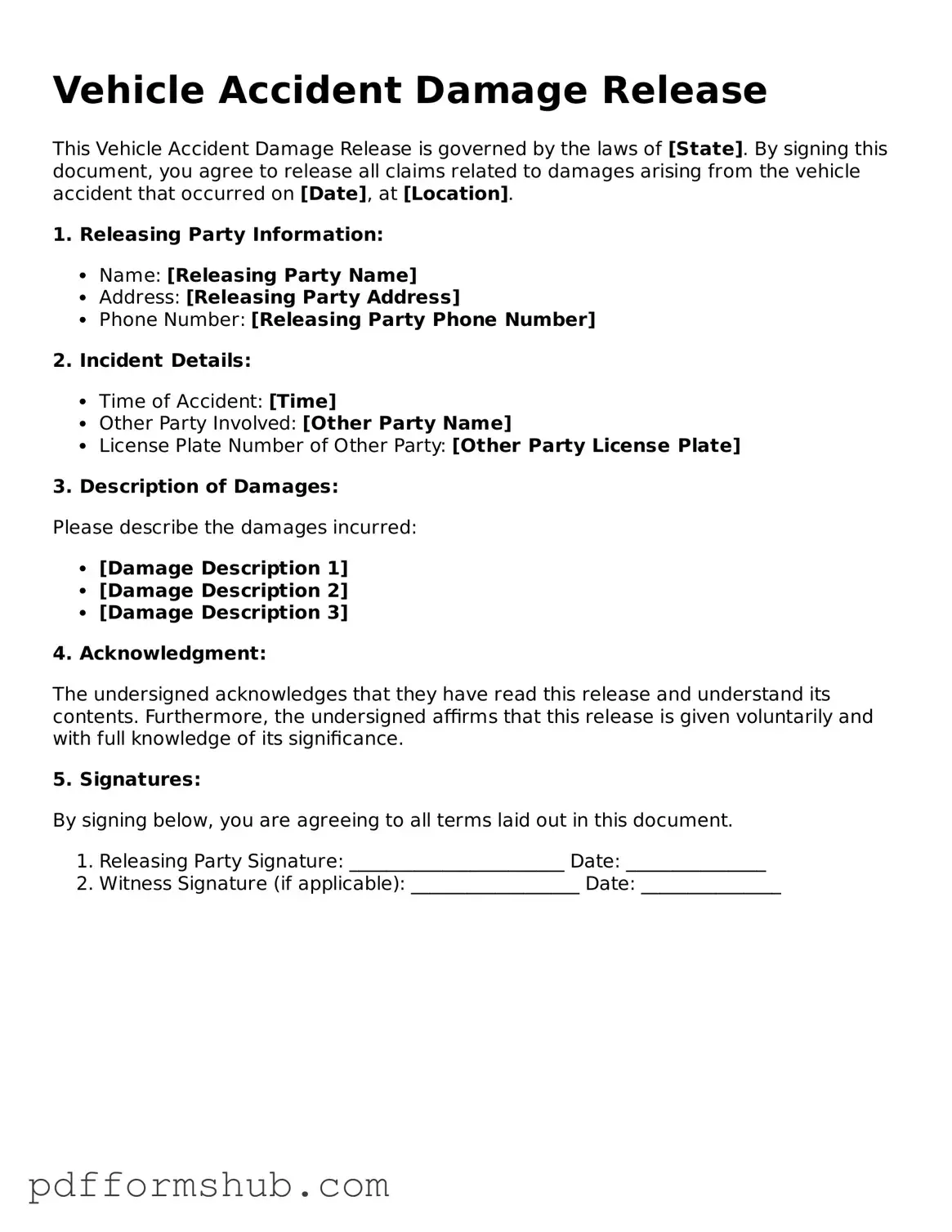Valid Vehicle Accident Damage Release Form
The Vehicle Accident Damage Release form is a legal document that allows an individual to release a party from liability for damages resulting from a vehicle accident. This form is essential for ensuring that all parties agree on the terms of compensation and liability. Understanding its importance can help streamline the claims process and protect your rights.
To get started, fill out the form by clicking the button below.
Customize Form
